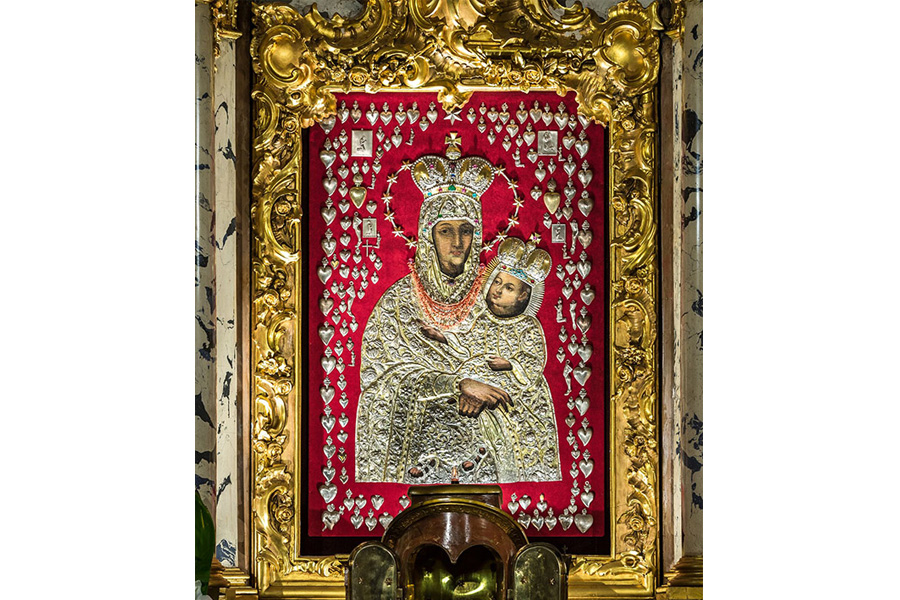
This Church is included as part of the Places of Marian Devotion
According to written historical sources, in the 14th century Albertas Gostautas, a nobleman of the Grand Duchy of Lithuania invited fourteen Franciscans to come to Vilnius. They were subsequently beheaded or crucified by its residents upon the departure of the nobleman. A. Gostautas erected a cross on the martyrs’ tomb, which survived undamaged during the great fire of the City; graces were later received through the intercession of the martyrs. Holy Cross Chapel was built in 1543 on the site of the cross. In 1635 Bishop Abraomas Vaina invited Bonifratres (Lat.: boni fratres – good brothers) monks to Vilnius and entrusted them to care for the old and infirm priests, and poor laity. Though unusual for the time, the Brothers also cared for the mentally ill. Once established in Vilnius, the Bonifratres built a Church and monastery near the Holy Cross Chapel.
The Church was decorated in its current style in the 18th century after a fire devastated Vilnius. The exterior of Holy Cross Church is quite modest, with the only decoration being lattice crosses adorning its square tower tops. The interior of the Church is richer, but somewhat unusual compared to other Vilnius Late Baroque churches. It is important to mention that a spring flows through the basement of the Church, which, it is said, erupted when the Franciscan monks were beheaded. The faithful believe that the water of this spring cures eye diseases.
Holy Cross Church was closed in 1843 after the Bonifratres were expelled from Vilnius. During the interwar period, the Brothers returned and established a home for the elderly and a facility to feed the poor. After the Second World War, the Church was closed again and converted into a sorting warehouse for books that were used to stock libraries. The monastery was converted into apartments and used as living quarters by the residents of Vilnius, while the remainder of the premises housed the Vilnius Lore Museum. In 1976 the Church was carefully restored and adapted for use as an organ music concert hall. In 1995 the buildings were given to the Sisters of the Immaculate Conception of the Blessed Virgin Mary of the Poor, and the monastery was reconstructed. Near the Church is the “Holy Cross House” social center, where the Sisters dedicate their time providing care and assistance to people experiencing difficulties.
A painting of Our Lady Health of the Sick, also known as Our Lady of the Snows, is reminiscent of Bonifratres times. The origins of the painting are unknown, but the first mention of it appears in Church inventory documents of the mid-18th century. Tokens of appreciation – metal coverings and votive offerings adorning the painting – attest to the graces granted through the image. The intercession and assistance of Our Lady Health of the Sick is particularly sought by people with health and vision problems. The Church facade is decorated with a copy of this picture.
Monday–Friday – 6 p.m.
Saturday – 11 a.m.
Sunday – 11 a.m., 7 p.m. (for students)




